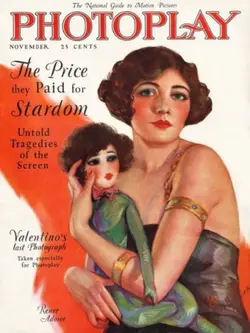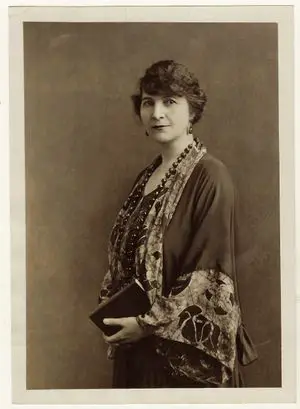When did Americans begin to get obsessed with weight loss
Between the late 19th and early 20th century weight shifted form an issue under the umbrella of health, to one under the umbrella of beauty. Diet shifted from meaning the “foods one ate” to a restrictive regimen aimed at reduction. In the late 19th century, discussions about food and diet were centered on health. For example, when the Los Angeles Board of Health Commissioners referenced the possible spread of Asiatic cholera, they offered a plethora of hygienic recommendations to stifle the spread of this disease—including hygienic food and drink recommendations.
These recommendations were essential since Asiatic cholera was “more fatal among the weak, ill fed, intemperate and filthy.”[1] As this example illustrates, food restriction and regulation in the late 19th century centered on guarding health, not achieving physical beauty.
Early Fad Diets
If articles referenced weight-loss or gain, they elicited health concerns, not aesthetic ones. In 1872, Sylvester Graham, the inventor of the graham cracker, suggested gluttony diminished health, and adversely affected health.[2] While health authorities generally advocated against gluttony or corpulence, they did so to protect their followers from the discomforts associated with indigestion and constipation. They urged a healthy diet—they did not push an aesthetic idea related to dietetic restriction. In the 20th century, however, this would change, particularly with Lulu Hunt Peters’ arrival to Los Angeles.
Lulu Hunt Peters was born in Milford, Maine, and acquired her medical degree from the University of California in 1909. Peters became the chairperson of the Public Health Committee of the California Federation of Women’s Clubs, Los Angeles District before writing Diet and Health and Key to the Calories. Weighing approximately 200-220 pounds at her heaviest, Peters lost 70 pounds by following her strict caloric guidelines and then went on to be the columnist for “Diet and Health” which was published in The Los Angeles Times.
Peters’ book sold approximately two million copies and remained in continuous publication for over twenty years.[3] Ads for her book appeared everywhere, from the Chicago Daily Tribune to Vogue. Her book is also credited with being the first modern American diet book, and spurring a generation of calorie counting and fad dieting.
Patriotism and the Hollywood Diet
Diet and Health, published in 1918, imbibed a patriotic language in the midst of World War I. According to Peters, “in war time it is a crime to hoard food, and fines and imprisonment have followed the exposé of such practices. Yet there are hundreds of individuals all over America who are hoarding food, and that one of the most precious of all foods! They have vast amounts of this valuable commodity stored away in their own anatomy.[4] Peters announced that it was unpatriotic to be overweight.
Peters suggested forming the “Watch Your Weight Anti-Kaiser Class,” a program eerily reminiscent of weight-watchers meetings, except that those who failed to lose weight each week were fined—with the proceeds given as a donation to the Red Cross. While patriotism may have been in the background, the point of Diet and Health was clear—fatness resulted from overeating and under-exercising. While Peters acknowledged that genetics played a role in physique, she believed the decision to be fat was left, ultimately, to the individual. In Diet and Health and her later column in the Los Angeles Times, Peters urged her readers to reduce intake and food to numbers of calories, essentially mathematizing diet, and popularizing the concept of calorie-counting.
Different from most other health or diet books, was Peters’ addition of beauty tips and continuous reference to discipline. By placing beauty suggestions next to weight-loss tips, Peters conflated attractiveness with thinness. To Peters, people were not destined to be either fat or thin. According to Peters, dieting required perseverance and discipline. Peters’ work represented a shift in conventions of diet, health and appearance. While previous health gurus emphasized particular diets for health, vitality, or “the race,” few made aesthetic connections between food, thinness and beauty. After Peters, a svelte figure was an attractive one; after all, “no one wants to be overweight.”[5] And this message took a hold of Hollywood.
In 1918, Rob Wagner wrote Film Folks: “Close-Ups” of the Men, Women, and Children Who Make the “Movies” in which he essentially broke down, into digestible chapters, the conventional roles and plots of the movies. One chapter, titled “The Movie Queen,” was much longer than the rest. When searching for “potential Juliets,” appearance was incredibly significant. Studios and employment bureaus asked girls for the name, phone number, address, age, height, weight, hair, chest, eyes, waist, nationality, wardrobe and previous experience. After they took this information, the girls were “filed away under various heads, such as matrons, young girls, children, chorus types, fat, [and] thin…” to be called upon when a particular opening requires.[6]

The nascent film companies attempted to keep their stars anonymous—to prevent them from becoming too popular and asking for higher pay. However, when Carl Laemmle, a film-trust opponent, began to lure actresses from other companies (promising publicity and fame) stardom skyrocketed. Once film consumers knew actors and actresses by name, film stars became trademarks for products and salaries rose. As salaries increased, requirements for actors and actresses did as well.
A supplemental textbook for the New York Institute of Photography, for example, addressed the physical characteristics that would not work under the camera’s gaze. Long necks screened better than short necks, “clear, white skin” looked better than the alternatives, a height of five-feet, two-inches worked best, and “a good figure counts for much on the screen.” According to the textbook, it was necessary to “make allowances,” since “the camera exaggerates…Many an actress who looks beautifully slender off the screen… must diet to keep thin enough for the camera."[7] Increasingly actors, and mostly actresses, found that contacts could only be signed or renewed with the addition of “weight clauses” that stipulated termination upon going over a certain weight.
As a particular image took hold of Hollywood, beauty books and magazines urged their readers to dress for their height, recognizing not much could be done to change it; however, weight and size were a separate issue—“people do love fat women but probably it is in spite of their size, not because of it… Unless you have something very seriously wrong organically, you can make your weight just what it should be…”[8] Beauty writers castigated women for overeating—citing the importance of changing habits to enact change in bodily composition. Fat bodies reflected poor eating habits, and slim bodies reflected self-control. According to Lulu Peters, dieting and slimness required discipline, work, and denial.
Criticism of the Fad Diet
However, some people did not have the patience for self-denial and work, and the early 20th century also saw the rise of a plethora of fad diets that promised quick results with minimal effort. Diets like the “pineapple and lamb chop” diet, “the skim milk and baked potato” diet, or the Mayo diet and different creams and soaps promised to melt or wash away the fight, eliminate double chins or provide a more youthful appearance. Lulu Peters abhorred these dietary agents—calling for stricter federal enforcement against “these fraudulent advertisements” that took advantage of people who wanted to look a certain way. And while Peters herself spoke out against those who advocated "freak diets" that averaged between 600-700 calories per day, the fact was that many of Hollywood's leading ladies sometimes only had about 10 days to get their figure.
In 1928, The Washington Post published an exposé on the dangers of starvation in Hollywood. Citing the prevalence of underweight actresses, the article condemned the film industry for negatively affecting the lives of other women around the country who endangered their own lives for the sake of beauty. Dr. H.B.K. Willis, a Hollywood physician, claimed that when young girls, age 15-16, see actresses like Alice White, who went from 126 pounds to 96 pounds in a few weeks, they put their bodies at risk. This was certainly true.
Between July 1928 and December 1928, Renee Adoree went from 125 pounds to 97. According to a later account, Adoree’s look was still too heavy for the figure her industry desired, and she began a strict calorie-reduced diet which she continued until it landed her in a hospital in 1930 (at approximately 80 pounds). Reports from the period suggested that Adoree had been working too hard. Journalists stated that her first hospitalization, in March 1930, was due to a bronchial cold. The following hospitalization, in October 1930, was due to a physical breakdown, though her frailty left her vulnerable and she contracted tuberculosis. Renee Adoree remained hospitalized for two years. In 1932, Adoree’s friends and family began to hope for her return. She had gained 25 pounds in the two years and appeared to be making strides towards progress. When physicians released Adoree, she wanted to get back to work. Upon her return, she relapsed to her prior condition. When Adoree passed away on October 5, 1933, newspapers credited “chronic respiratory ailment” as the cause of death—not her 85 pound weight.
Hollywood is still often credited with providing negative examples of health and beauty. And while there have been recent examples of fashion designers and film directors moving towards more healthy, positive body images, the Lulu Hunt Peters’ work has not been undone. Her work in linking beauty to thinness was so successful that it remains.[9]
References
- Jump up ↑ ["The Public Health." Los Angeles Times, Sep 23,1892 2-2].
- Jump up ↑ [Sylvester Graham, M.D., Lectures on the Science of Human Life, (Battle Creek: The Office of the Health Reformer, 1872), p. 25.].
- Jump up ↑ "Counting Calories," Chemheritage.org.
- Jump up ↑ Hunt Peters Diet Recommendations.
- Jump up ↑ [Lulu Hunt Peters, M.D., “Diet and Health: Get-Thin-Quick Schemes,” Los Angeles Times, January 4, 1924, p. A6].
- Jump up ↑ [Rob Wagner, Film Folk: ‘Close-Ups’ of the Men, Women, and Children who Make the ‘Movies,’ (New York: The Century Co., 1918), p. 250, 252].
- Jump up ↑ [Inez and Helen Klumph, Screen Acting: Its Requirements and Rewards, New York Institute of Photography, (New York: Falk Publishing, Co., Inc., 1922), p. 215-216.].
- Jump up ↑ [Antoinette Donnelly, “Reducing with the Stars,” Chicago Daily Tribune, October 18, 1925, p. B4].
- Jump up ↑ [Carl Malmberg, Diet and Die, (New York: Hilman-Curl, Inc., 1935), p. 18].

